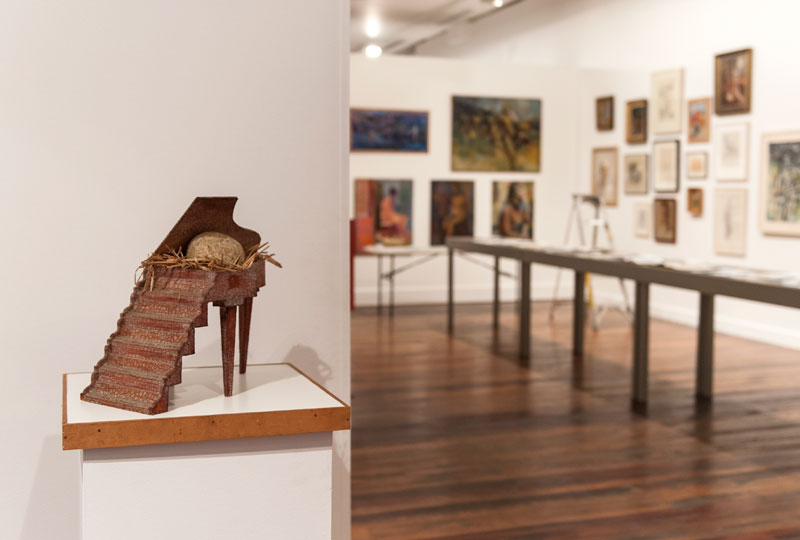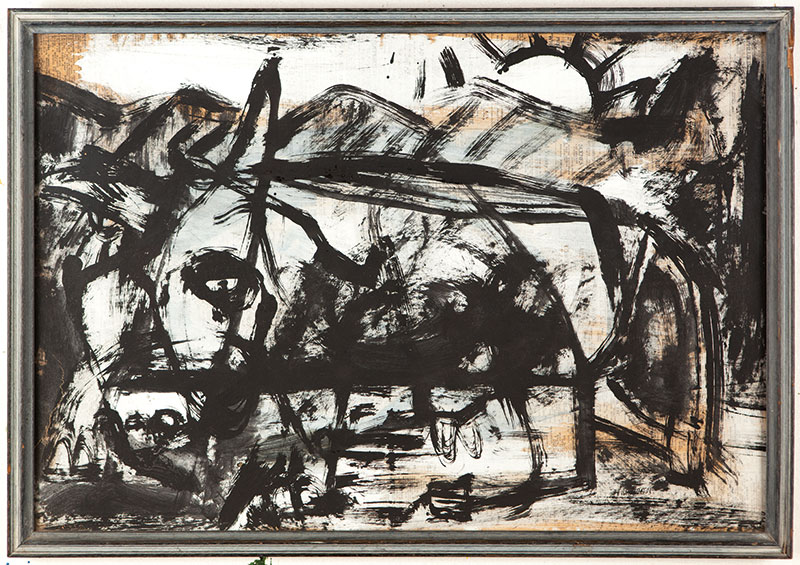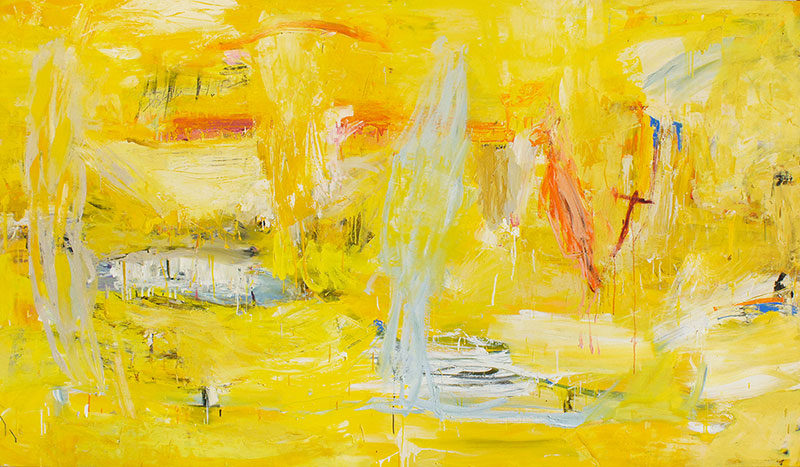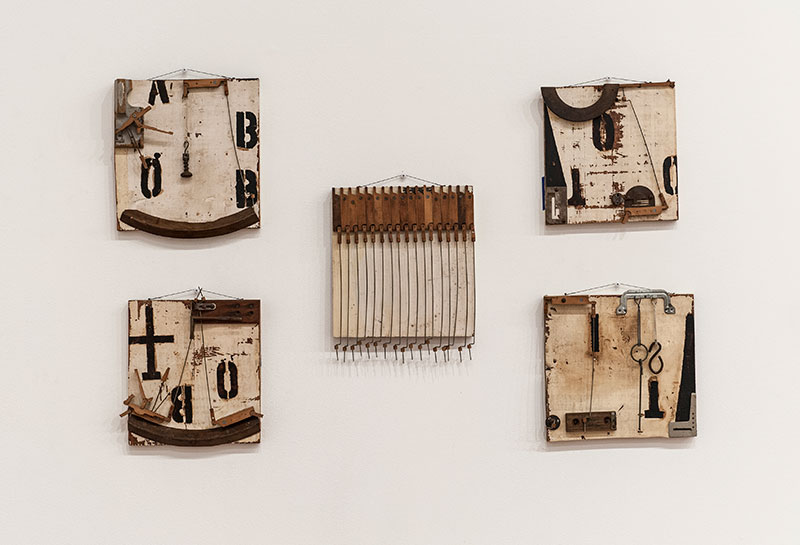.jpg)
At the ground floor entrance to this exhibition is a photograph from an article by Patricia O’Connell in the Teenagers Weekly section of the Australian Women’s Weekly from 26 October 1960. With a nod to the street style of Paris’ Left Bank/Latin Quarter the un-named staff photographer created a tableau of students leaving the Burton Street gate of the National Art School. Perfectly framed by sandstone, a couple, Martin Sharp (1942–2013) and Leone Ferrier talk, while three women – Ann Thomson, Vivienne Binns and Rose Vickers – gaze out in different directions to the world of the future. Hopefully, a world made whole, made more perfect, by art of all kinds. On closer inspection of the blown-up image, all but one artist has autographed their youthful self-conscious posed figures – a poignant recognition underlined by a 2013 aerial view of the same architectural features drawn by Martin Sharp in his room at the nearby St Vincent’s Hospice.
Formally divided by the gallery architecture into two complementary sections, there is a natural balance between the elegant, tightly focused survey of the work of Ann Thomson upstairs with that of her contemporaries – a rambunctious jostling melange of works made by fellow students and teachers c. 1957–64. Here amongst vitrines that contain historical press cuttings, assorted drawings, brickbats and bouquets one can encounter the works of Godfrey Miller, Douglas Dundas, Peter Travis, Colin Lanceley, Herbert Badham, Robert Owen, Ken Unsworth, Peter Powditch, Alan Oldfield and Garry Shead et al.

Foregrounded amongst these illustrious alumni are three talismanic Ann Thomson paintings, Cow in Country (1960), This Road Leads to Nowhere (1963) and Advance Australia Fair (1963). They reveal the generative force and the long-term commitment by the artist to a mode of depiction – loosely applied marks, brushstrokes and gestures, text fragments, biomorphic and landscape references combined with associative poetic titles. Thomson takes this style or manner of approach beyond the constrictions of gender to create her own visual language. What is surprising is that Thomson’s unique abstraction emerges from an art education that emphasised skills in representational illusionistic drawing above all else. I think it significant that Thomson has admitted that she still recalls the lessons learnt from teachers Dorothy Thornhill and especially John Passmore.

The viewer is immediately made aware of this heritage in the confident, carefully composed large-scale paintings and sculptures of the upper level gallery. There is an epic architectonic quality to a series of collages that use tarred paper as a base. As well as marine themes, meetings and departures seem to be leitmotifs. Hung very high are two bravura drawings Escape (1975) and Air Current (1977) that speak of the frantic activities that children create and demand of their carers. For me, the most impressive paintings in this section of the exhibition are Station (1986), a gem from the New England Regional Art Museum. This painting is an abject mixture of armatures, carcasses, mask-like shapes and saline drips. IV-C (1994) is a spatially complex work with echoes of Cy Twombly and Elwyn Lynn. Yellow Sound (1998) is perhaps easier to read’ with a tripartite division of the picture that immediately suggests a landscape- based abstraction. The title of course harks back to the spiritualist matrices of the Expressionist mode of the Kandinsky and Blue Rider Group. Also exciting to see again are the assemblages Piano Pieces (2003).
Ann Thomson and Contemporaries is a richly enjoyable exhibition. There is a palpable generosity of spirit about this show that invites audiences to consider the occasionally fraught hothouse pedagogical and personal contexts of the art school environment and community and how this milieu might inform or influence the artists later career … Or, then again, not. Regardless, this exhibition confirms without doubt the stature of Ann Thomson within the canons of Australian abstract art as teacher, mentor and leader.














